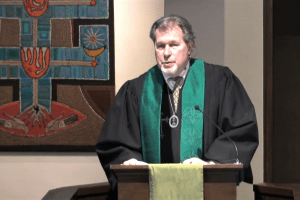
Any inquiry begins with a question. It is the forming of this question that determines the outcome and shapes the findings. What is learned is shaped by whether the question is focused on the desired outcome. So, we must first pose the question correctly: Is it our wish to grow or our wish to be healthy (assuming any numerical growth might take care of itself)? Here’s my assumption: Healthy Christians (laity/clergy, members/leaders) form healthy congregations.

Keith Herron
What is the relationship between church growth and church health? Are they related, and if they are, what is the relationship between them?
Some have considered churches using the language of “family.” Thus, family systems theory is often used for diagnostic and prescriptive purposes to address the issues of church health. The following barometer begins with covenant and moves toward mission and purpose in order to define what a healthy church looks like.
1) A covenant joins us together – “we are bound together” in heart and mind – our responsibilities with one another are fulfilled in faithfulness to one another where persons feel valued and loved reciprocally one with another.
2) Healthy churches have a sense of roots from which they have descended – traditions and rituals help define who we are (identity) and shape what we’re about (mission).
3) Healthy churches spend time together – they pray together, work together, and play together, in somewhat equal portions as all are important ways to spend time together.
4) Healthy churches communicate beyond the superficial to the deepest level of sharing – shared trust encourages transparency.

James E. Petts / Flickr
5) Healthy churches have a strong spiritual relationship with Jesus/God/Spirit and healthy ties to other churches that share that spiritual commitment – healthy churches see themselves in partnership with God and with one another to do God’s work.
6) Healthy churches find positive ways to handle their conflict – they are willing to forgive/forget one another with grace recognizing all of us have “clay feet.”
7) Healthy churches adapt to change both within the church and outside it – all while keeping their eyes on their calling of mission/purpose and a strong willingness to serve where they are planted – they adopt the credo, “nothing stays the same for long.”
8) Healthy church families do not form around the idea they exist so they can admire themselves, but because they believe they are essential to the will of God in teaching, training, and reaching other individuals – they have a keen sense of mission and purpose – thus, non-church persons feel welcomed and comfortable when they appear.
So how is your church doing on these eight characteristics?
Keith Herron has been a pastor in Kansas, Missouri, and Texas, and is the author of Living a Narrative Life: Essays on the Power of Stories.






